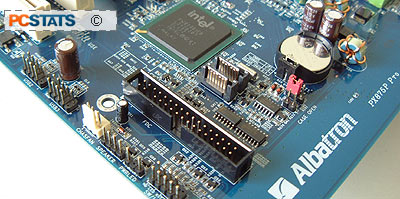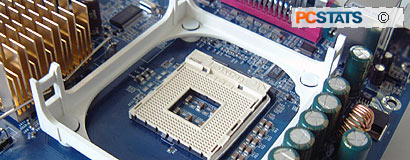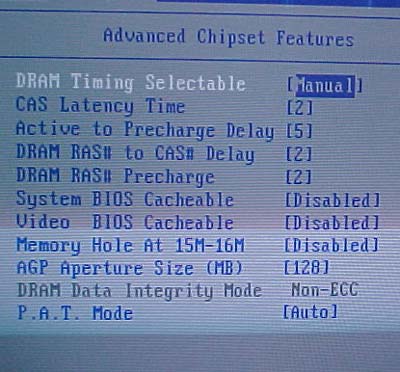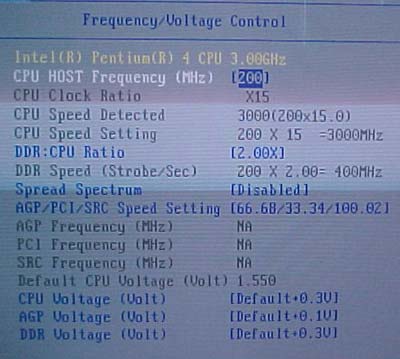 There is a lot
of free space where the designers could have placed the floppy drive connector, instead of its current
location at the bottom of the motherboard, parallel to the fifth PCI
slot.
There is a lot
of free space where the designers could have placed the floppy drive connector, instead of its current
location at the bottom of the motherboard, parallel to the fifth PCI
slot.
Where it is right now is perfectly fine for mid
tower cases... but for larger full tower cases it may be a bit of a stretch.
Other than these few minor notes, there isn't all that much to comment about -
Albatron have a built a basic board, with all the right components in
right location.
Now Let's
Overclock!
 We've always had a lot of luck overclocking Albatron products, and I anticipated the
Albatron PX875P Pro to continue the trend.
We've always had a lot of luck overclocking Albatron products, and I anticipated the
Albatron PX875P Pro to continue the trend.
Testing with a Pentium 4 3.0C we slowly raised the FSB a
few MHz at a time... at 217 MHz we ran into a few problems, but increasing the memory
voltage to 2.8V solved all that.
In the
end, the highest stable speed the Albatron PX875P Pro was able to reach with a
pair of Corsair TwinX 512-3200LL DIMM's,
was 225 MHz. Surprisingly with a pair of 512MB OCZ PC3700 Gold DIMMs, the board
hit 230 MHz... Not bad for
a no frills motherboard, eh!
What to expect in the BIOS
Albatron packs in all the memory tweaks we'd
expect from a performance oriented motherboard.

From CAS Latency, RAS to CAS Delay and RAS Precharge it's
all there. Albatron also gives the end user the ability to toggle on/off Intel's
Performance Acceleration Technology (PAT).

Of course there are FSB adjustments you can change from
200-350 MHz, in 1 MHz increments. There are the normal 1:1, 5:4 and 3:2 memory
dividers, and you can set the AGP/PCI/SRC independent from the FSB. The maximum
CPU voltage is 1.85V, AGP (chipset) is 1.6V and DDR is 2.8V. Now for the benchmarks that you've been waiting
for!
